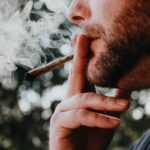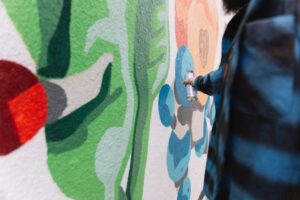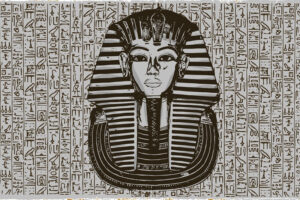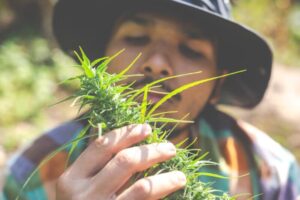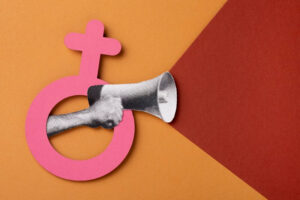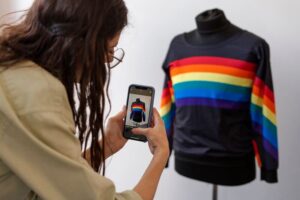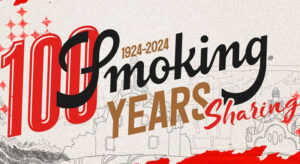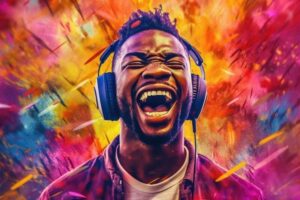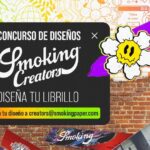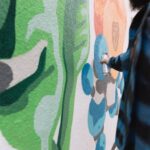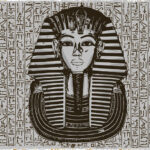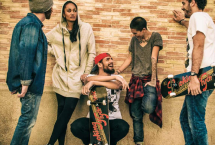DISTURBIOS DE STONEWALL: ¿QUÉ SIGNIFICARON PARA LA COMUNIDAD LGBT?
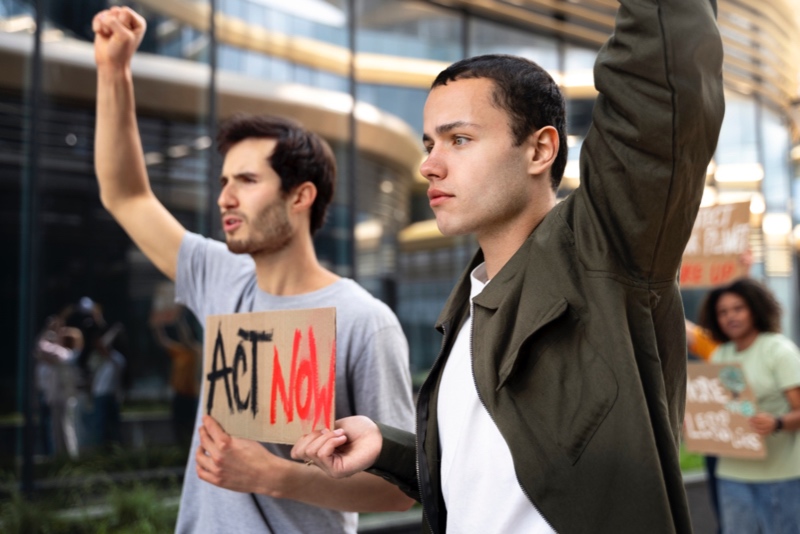
The Stonewall Riots, also known as the Stonewall Uprising, began in the early morning hours of June 28, 1969, when New York City police raided the Stonewall Inn, a gay club in New York’s Greenwich Village.
The raid sparked riots among the bar’s patrons and locals, as police violently evicted employees and regulars inside, leading to six days of protests and violent clashes with law enforcement outside the bar, on Christopher Street, on adjacent streets and near Christopher Park.
Constant raids on gay bars
The 1960s and preceding decades were not benign times for lesbian, gay, bisexual and transgender (LGBT) Americans. For example, demonstrating homosexual sex was perfectly illegal in New York.
For these reasons, LGBT people flocked to gay bars and clubs as places of refuge where they could express themselves openly and socialize without worry. However, the New York State Liquor Authority began sanctioning and ordering the closure of establishments that served alcohol to known or suspected LGBT people, arguing that the mere gathering of homosexuals was a public nuisance.
Thanks to the efforts of activists, this regulation was repealed in 1966 and alcohol can now be served to LGBT patrons.
June 24, 1969: Police arrest Stonewall employees and confiscate alcohol
On the Tuesday before the riots began, police conducted an evening raid on the Stonewall Inn, arresting some of its employees and confiscating its illegal liquor supply. As with many similar raids, the police targeted drinking establishments that did not have a proper liquor license.
After this raid, the NYPD planned a second raid for the following Friday, which they hoped would close the bar for good.
June 27-28, 1969: In front of Stonewall, crowd anger erupts against police after customers are arrested and brutally beaten
After midnight on an unusually hot Friday night, the Stonewall was packed when plainclothes police entered the bar. In addition to bar employees, they also targeted drag queens and other transvestite patrons before arresting them. In New York, impersonating the opposite sex was a crime.
More NYPD officers arrived on foot, joined by three patrol cars. Meanwhile, bar patrons, who had been released, joined the crowd of onlookers forming outside Stonewall. A police van, commonly known as a «paddy wagon» arrived and the police began loading Stonewall employees and transvestites inside.
📺 LGBT SHOWS ON NETFLIX YOU SHOULD WATCH!
Early morning of June 28, 1969: transgender women resist arrest. Bottles are thrown at the police
The crowd erupted in anger after police roughed up a male-looking woman. People began taunting the officers by shouting «Pigs!» and throwing pennies and bottles at them.
According to David Carter, historian and author of Stonewall: The Riots that Sparked the Gay Revolution, the «hierarchy of resistance» in the riots began with the street kids, those young gay men who saw Stonewall as the only place where they were somewhat at home.
Two transgender women of color, Marsha P. Johnson and Sylvia Rivera, reportedly resisted arrest and threw the first bottle (or brick or rock) at the cops, respectively. Although Johnson later stated in a 1987 interview with historian Eric Marcus that she hadn’t yet arrived when the uprising broke out.
Knowledge of who did what isn’t precise – in part because this is a time before the age of smartphones, and documentation of the night’s events was minimal.
Nearly 4 a.m. on June 28, 1969: Police retreat and barricade themselves inside the Stonewall
As the salad cart and squad cars left to drop off prisoners in the nearby Sixth Ward, the growing crowd forced the NYPD group to flee inside the Stonewall and barricade themselves inside.
Some rioters used a parking meter as a battering ram to break down the door; others threw beer bottles, trash and other objects, or made improvised Molotov cocktails with bottles, matches and lighters.
Sirens announced the arrival of more police, as well as squads from the Tactical Patrol Force (TPF), the city’s riot police. As the helmeted officers marched in formation down Christopher Street, the protesters foiled their strategy by running away, then bypassing the small blocks of the neighborhood to come up behind the officers, catching them off guard.
Finally, shortly after 4 a.m., things calmed down. Surprisingly, no one died or was seriously injured on the first night of the riots, although a few officers reported injuries.
June 28-29: Stonewall reopens, supporters gather. Police attack and disperse the crowd with gas.
Despite being damaged by cops, the Stonewall Inn reopened the next day (although it didn’t serve alcohol). More and more supporters showed up.
Once again, police were called in to restore order, including an even larger group of TPF officers, who beat up people and gassed the crowd. The situation continued until the early morning hours, when the crowd dispersed.
June 29-July 1, 1969: Stonewall
Over the next few nights, gay activists continued to gather near the Stonewall, using the time to inform and build solidarity that would soon allow the gay rights movement to flourish. Although the police also returned, the atmosphere was less confrontational, with isolated skirmishes replacing the large-scale riots of the weekend.
🥳 YOU SHOULD KNOW WHICH ARE THE BEST GAY FESTIVALS IN THE WORLD!
July 2, 1969: Gay activists protest newspaper cover
In response to the Village Voice newspaper’s coverage of the riots, which referred to the «forces of queerness,» demonstrators invaded the newspaper’s offices.
Some called for the building to be burned down. When police drove off the attackers, the rioting began again, but did not last, ending around midnight.
✅ YOU NEED THESE TIPS TO USE NON-BINARY PRONOUNS!
June 28, 1970: First Gay Pride Parade Starts at Stonewall
On the one-year anniversary of the Stonewall Inn raid, gay activists in New York City organized the Christopher Street Liberation March to close the city’s first Gay Pride Week.
As several hundred people began marching up 6th Avenue toward Central Park, they were joined by supporters of the march. The procession eventually stretched for about fifteen blocks, encompassing thousands of people.
Inspired by the New York example, activists in other cities, including Los Angeles, San Francisco, Boston and Chicago, organized gay pride celebrations that same year.
The frenzy of activism born that first night at Stonewall would eventually fuel gay rights movements in Canada, Britain, France, Germany, Australia and New Zealand, among other countries, becoming an enduring force that would endure for the next half century… and beyond.
RECENT POSTS
MURALISMO CHICANO: CULTURA EN LAS PAREDES DE L.A.
El muralismo chicano en L.A. ha sido por largos años un recurso genuino de protesta social que está íntimamente ligado a los artistas hispanos que hacen vida en Estados Unidos. De hecho, el arte chicano es una creación principalmente de dos nacionalidades que fusiona el neocolonialismo, el éxodo masivo y la transculturización. Hay variedad de […]
TATUAJES EGIPCIOS: INSPIRACIÓN, SÍMBOLOS Y SIGNIFICADO
Cuando te decides a hacerte un tatuaje, es crucial tener una idea clara del diseño que quieres y en qué parte del cuerpo lo quieres. Si no tienes ni idea de qué elegir, te sugerimos una opción con un montón de variedades y significados: ¡los tatuajes egipcios! Esta temática es super popular entre los fanáticos […]
FERIA SPANNABIS BARCELONA 2024: LAS NOVEDADES MÁS ESPECIALES
Estar en Barcelona para los Premios Internacionales de Cannabis y la Semana de la Feria Spannabis es como visitar el Santo Grial del mundo de la marihuana. Decenas de miles de aficionados descendieron sobre la gloriosa ciudad antigua de Barcelona en la costa mediterránea española, tanto como turistas como fumadores, ansiosos por empaparse de los […]
SAMSUNG S24 ULTRA: TODO SOBRE EL ESTRENO DEL ÚLTIMO GALAXY
Las pantallas planas finalmente se abren paso entre los mejores modelos de celular y se transforman en los más elegidos de la telefonía celular. Si bien, todavía estamos a unos meses de la actualización de la serie Samsung Galaxy S23, ya se sabe que el Samsung Galaxy S24 Ultra es el sucesor del S23 Ultra […]
CONCURSO SMOKING 100 YEARS SHARING: PREMIOS, JURADO Y CÓMO PARTICIPAR
¡Hola, creativos! ¡Tenemos noticias emocionantes! Smoking está en busca de la próxima ola de talento creativo, ¡y queremos QUE TÚ seas parte de ella! ¡Mientras celebramos nuestros 100 años de legado, estamos emocionados de anunciar el lanzamiento del Concurso Smoking 100 Years Sharing! ¿De qué se trata? Es nuestra forma de apoyar el talento joven […]
¿QUÉ ES LA IGUALDAD DE GÉNERO Y POR QUÉ ES TAN IMPORTANTE?
El concepto de igualdad de género es un término que conlleva una labor inacabada. En la actualidad las mujeres y las más pequeñas pasaron a ser la mitad de la población mundial, por ende, la igualdad de género, además de ser un derecho y no un privilegio, pasa a ser un punto central para lograr […]
CIUDADES INTELIGENTES Y SOSTENIBLES: ¿CÓMO PODEMOS LOGRARLO?
Las ciudades inteligentes en el mundo emergen con fuerza y se hacen notar. Su existencia es observada por el resto del planeta y son un ejemplo a imitar. ¿Por qué las cities o ciudades inteligentes están llamando la atención? ¿Qué las diferencia del resto? ¿Qué se destaca o predomina en ellas? En principio, son ciudades […]
LISTA CON LOS MEJORES JUEGOS DE LA PLAY STORE DE ANDROID
Señalar cuáles son los mejores juegos de la Play Store puede ser causa de un eterno debate. Pues, si bien es cierto que depende del gusto de los usuarios, siempre hay cierta coincidencia entre todos. ¿Cuáles son los mejores juegos de la Play Store? En lo que ha transcurrido del 2024, los juegos de la […]
PARASAILING, ¿QUÉ ES? Y DÓNDE PRACTICARLO EN MÉXICO
¿Has escuchado sobre el parasailing? Se trata de una disciplina deportiva acuática que consiste en dejarse elevar por un paracaídas especial mientras eres remolcado por una lancha motora. ¡Es una sensación increíble! Este deporte te permite tener una vista espectacular desde las alturas mientras sientes la brisa en tu rostro. México tiene orgullosamente algunos de […]
VIAJÁ A CONOCER LA MARAVILLOSA VILLA PEHUENIA EN LA PATAGONIA
Villa Pehuenia está ubicada en la parte centro – oeste del departamento de Aluminé, en la provincia de Neuquén, Argentina, justo al pie de los Andes Patagónicos, entre la ruta nacional 22 y la ruta provincial 13. Villa Pehuenia es una combinación de islas, lagos y montañas, paisajes que te invitan por sí solos a […]
¡LAS MEJORES CANCIONES DE CHARLY GARCÍA!
El gran artista argentino Charly García, si el del oído absoluto, el magnífico compositor, el que compone música desde los 9 años, fundó en 1969, junto a Nito Mestre, el grupo Sui Generis. A partir de ese momento, comienza la vertiginosa y extensa carrera como músico profesional. Desde ese momento, la leyenda del rock argentino, […]
TODO SOBRE LOS PREMIOS OSCAR 2024: NOMINADOS, GANADORES Y MÁS
Los Óscar podrían no estar rompiendo récords de audiencia en los últimos años. Los números están disminuyendo, y la competencia se está volviendo más dura. El público está sintonizando plataformas de transmisión o explorando otras formas de entretenimiento como los videojuegos, la nueva gran tendencia en la industria del ocio. Los Óscar persisten y seguirán […]
ROPA INTELIGENTE Y SUS CARACTERÍSTICAS: ¿QUÉ ES Y CÓMO FUNCIONA?
La tecnología no nos deja de sorprender, si pensábamos que esta solo podía ser aplicada al sector de la ciencia, de la medicina y de los aparatos electrónicos estábamos muy equivocados. Para nuestra sorpresa existe la ropa inteligente, la cual nos daría para pensar mucho cómo es esto posible. Puede que lo primero que se […]
ALONE IN THE DARK REMAKE: REINVENTANDO UN JUEGO DE TERROR
Alone in the Dark, programado para lanzarse el 20 de marzo de 2024, es un próximo título de terror de supervivencia creado por Pieces Interactive y presentado por THQ Nordic. Este juego sirve como una nueva versión del lanzamiento de 1992, también titulado Alone in the Dark, marcando la séptima entrada en la serie de […]
SMOKING PAPER CUMPLE 100 AÑOS Y LO CELEBRA: «100 YEARS SHARING»
Conoce todo sobre el concurso de creatividad por el centenario de Smoking Paper
MÚSICA AFROBEAT: LOS ARTISTAS MÁS POPULARES
El Afrobeats se ha convertido en uno de los géneros más eclécticos de la música contemporánea. La moneda es Afrobeats (con una ‘s’), similar al Afrobeat popularizado por Fela Kuti en la década de 1970, pero se destaca por sus orígenes y sabor modernos. Afrobeats no es un estilo en sí mismo; es una mezcla […]
Newsletters
Last Minute new From Roll & Feel Sign-up
Stay in touch with our latest
news





 smokingpaper
smokingpaper



